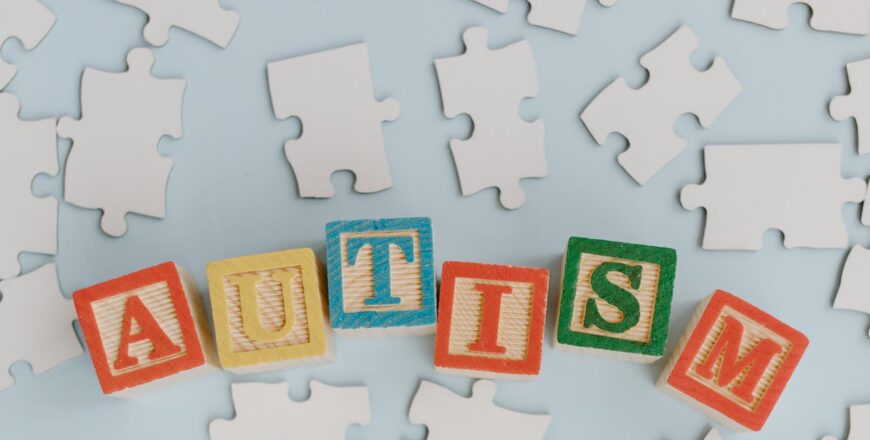Advanced Autism Awareness Diploma Course
- Description
- Curriculum
- Reviews

This comprehensive and insightful course builds on what was learnt from the Autism Awareness Diploma, though you can study it as a standalone course. From this information-rich resource, you will learn effective therapies, techniques, interventions, and strategies that can improve the wellbeing of autistic children, while providing you with a much greater understanding and insight into the issues surrounding autism.
-
1What is Autism?
Introduction to Autism
Autism, or Autism Spectrum Disorder (ASD), is a complex developmental condition that affects communication, behavior, and interaction with others. The “spectrum” refers to the wide range of symptoms and levels of impairment or disability that people with autism can experience.
-
2Managing Symptoms
Introduction
Autism Spectrum Disorder (ASD) is a developmental condition that affects communication, behavior, and social interaction. Managing autism symptoms involves a comprehensive approach tailored to individual needs. This lesson provides an overview of strategies and interventions to support individuals with autism.
-
3What is Occupational Therapy?
Introduction to Occupational Therapy (OT)
Occupational Therapy (OT) is a client-centered health profession focused on promoting health and well-being through occupation. The primary goal of OT is to enable individuals to participate in the activities of everyday life. Occupational therapists achieve this by working with people and communities to enhance their ability to engage in the occupations they want to, need to, or are expected to do, or by modifying the occupation or the environment to better support their occupational engagement.
-
4Sensory Processing Disorder
Introduction
Sensory Processing Disorder (SPD) is a condition where the brain has difficulty receiving and responding to information from the senses. This can affect daily functioning, social interactions, and the ability to perform tasks. SPD is commonly seen in individuals with autism but can occur independently.
-
5Accessing OT
Introduction to Occupational Therapy (OT)
– Definition: Occupational Therapy (OT) is a client-centered health profession that helps individuals achieve independence in all facets of their lives.
– Relevance to Autism: OT is particularly beneficial for individuals with autism spectrum disorder (ASD), addressing sensory integration, motor skills, and daily living activities.
-
6What is Speech and Language Therapy?
What is Speech and Language Therapy?
Overview
Speech and Language Therapy (SLT) is a specialized field focused on the assessment, diagnosis, and treatment of communication and swallowing disorders. It aims to help individuals improve their communication abilities, which can significantly impact their social, educational, and emotional well-being. This therapy is especially crucial for individuals with autism, who often face unique challenges in these areas.
-
7The Impact of Impairment
Overview
In this lesson, we will explore the concept of impairment and its multifaceted impacts on individuals with autism spectrum disorder (ASD). We will delve into the nature of impairments, how they manifest in daily life, and the broader implications for personal development, social integration, and support strategies.
-
8Helping a Child to Communicate
Introduction
Communication is a fundamental aspect of human interaction, and for children with autism, developing effective communication skills is crucial for their social and emotional well-being. This lesson will explore various strategies and tools to help children with autism communicate more effectively.
-
9The Development of Applied Behaviour Analysis
Introduction
Applied Behaviour Analysis (ABA) is a scientific approach to understanding behavior and how it is affected by the environment. ABA principles are widely used in the treatment and education of individuals with autism spectrum disorder (ASD).
-
10What is ABA?
Introduction to ABA:
Applied Behavior Analysis (ABA) is a scientific approach used to understand behavior and how it is affected by the environment. It is primarily used to improve specific behaviors in individuals with Autism Spectrum Disorder (ASD). ABA is based on the principles of learning theory and is widely recognized as an effective intervention for autism.
-
11Deciding if ABA is Right for Your Child
This lesson will explore the principles and considerations involved in determining if Applied Behavior Analysis (ABA) is suitable for a child with autism. ABA is a widely used therapeutic approach, but its applicability varies depending on individual needs and circumstances. By the end of this lesson, students will gain insights into evaluating the suitability of ABA for children with autism and making informed decisions.
-
12Autism and Emotional Wellbeing
-
13Cognitive Behaviour Therapy
-
14Music and Drama Therapies
Introduction:
– Define music and drama therapies.
– Explain their relevance and effectiveness in working with individuals with autism.
– Outline the goals and benefits of using these therapies in autism intervention.
-
15What is the Holistic Approach?
-
16How Social Workers and Others Can Help
Introduction:
Social workers play a crucial role in advocating for individuals with autism spectrum disorder (ASD) and their families. By understanding the unique needs of individuals on the spectrum, social workers can provide invaluable support and contribute to the advancement of autism awareness. In this lesson, we will explore the ways in which social workers and other professionals can make a difference in the lives of those affected by ASD.
-
17Basic Behaviour Strategies
-
18The Four Main Holistic Approaches







